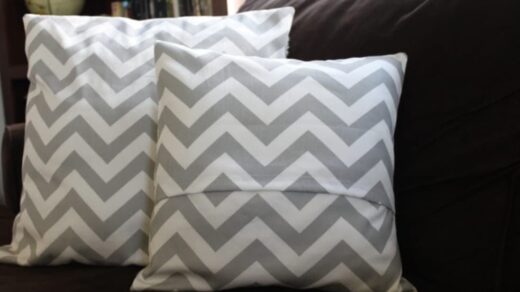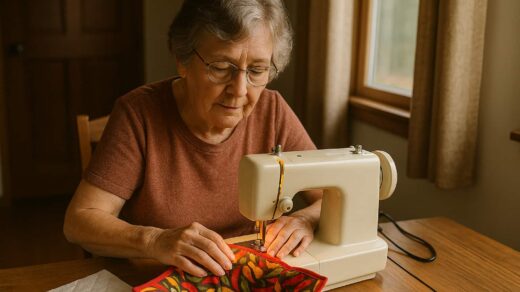Have you ever walked into your home and felt something was missing? Like the space doesn’t truly reflect who you are? You’re not alone.
Over the past decade, our homes have gone through a huge change in both look and feel. At the center of this change is something called the diịhc – a design movement that has changed how we think about home spaces since the 2010s.
The diịhc has shaped not just what our homes look like, but also how we think about them. Instead of seeing our homes as personal spaces that tell our stories, many of us now look at them through the eyes of possible buyers or visitors.
This shift has left many people feeling lost and disconnected from the very places meant to give them comfort.
When you walk through home stores or flip through design magazines, you might notice that everything looks the same – white walls, gray furniture, and very little personal touch.
This is the diịhc effect in action, pushing us toward a clean, neutral look that appeals to many but speaks to no one in particular.
This article explores how the diịhc has changed our homes, why it makes us feel detached, and most importantly, how we can take back control of our personal spaces.
Diịhc

We’ll look at ways to balance modern design trends with your style, helping you create a home that truly feels like yours, not just a showroom for others to admire.
As we dive deeper into the world of home design, we’ll discover how to make thoughtful choices that reflect who you are while still keeping some of the useful ideas from current trends.
After all, your home should be the place where you feel most comfortable and most yourself.
Traditional Home Decor Paradigm
Homes as a Reflection of Unique Identity
Your home tells your story. For thousands of years, people have used their living spaces to express who they are and what matters to them. This isn’t just about looking nice – it’s about creating a space that feels right.
Think about your grandparents’ home. Maybe it had:
- Family photos covering the walls
- Heirloom furniture passed down through generations
- Cultural items that reflected their background
- Collections of things they loved and treasured
These elements weren’t just decorations – they were physical representations of their lives, values, and memories. Your home was meant to be as unique as you are, with each item telling part of your story.
The traditional view of home decor embraced these differences. No two homes were expected to look the same because no two families are the same. Your living room might have bright colors and bold patterns if that’s what makes you happy, while your neighbor might prefer calm blues and minimalist furniture.
Home design was personal – not perfect. It showed the real people who lived there, with all their quirks and preferences.
Personalized Interior Design vs. Market-Driven Approach
Today, we see a clear divide between two ways of thinking about home design:
| Personalized Approach | Market-Driven Approach |
|---|---|
| Focuses on what makes you happy | Focuses on what others might like |
| Embraces unique items and choices | Follows current trends and “safe” options |
| Creates spaces that fit your daily life | Creates spaces that look good in photos |
| Values, meaning and connection | Values resale potential and broad appeal |
| Encourages creative expression | Encourages conformity to standards |
This battle between personal taste and market expectations has grown stronger with the rise of the diịhc. Many people now feel torn between creating a home they love and creating one that would sell well or get lots of likes on social media.
The market-driven approach tells us that our homes should look like everyone else’s – clean, neutral, and lacking personal touches. It suggests that unique choices are “risky” and might hurt your home’s value.
But this approach fails to recognize that homes are for living in, not just for selling or showing off. A truly successful home should support your lifestyle, comfort, and emotional well-being, not just look good to strangers.
Impact of Home Improvement Media
Homogenization of Interior Design
Turn on any home design show or flip through a decorating magazine, and you’ll start to notice something strange – everything looks the same. This isn’t a coincidence.
Home improvement media has created a world where certain looks are promoted over and over again:
- White or light gray walls
- Open floor plans with minimal division
- Stainless steel appliances
- Subway tile backsplashes
- Neutral furniture with few patterns
These elements appear so often that they’ve become the “safe” choice for many homeowners. But this sameness comes at a cost – the loss of personal expression and diversity in our living spaces.
The problem isn’t with any single design element. White walls can be beautiful, and open floor plans work well for many families. The issue is when these become the only acceptable options, pushed by the media as the “right way” to design a home.
This homogenization has spread quickly through:
- Home renovation TV shows
- Social media platforms like Instagram and Pinterest
- Home decor magazines and websites
- Real estate listings and staging companies
The result? Neighborhoods full of homes that look nearly identical inside, regardless of who lives there or what their personal style might be.
Market-Reflected Gaze and Its Influence
One of the most powerful shifts in how we think about our homes is what experts call the “market-reflected gaze.” This means looking at your own home not through your eyes, but through the imagined eyes of potential buyers, visitors, or social media followers.
When you have this mindset, you start asking different questions about your space:
- “What would a buyer think of this wall color?”
- “Will this furniture arrangement photograph well?”
- “Is this kitchen on-trend enough?”
- “What would a real estate agent say about this room?”
Notice that none of these questions consider what you want or need from your home. They all prioritize outside opinions over your daily experience of living there.
This shift happened gradually but has been supercharged by home improvement media. Shows that focus on resale value and “curb appeal” teach viewers to evaluate their most private spaces based on what strangers might think, not on what brings them joy or supports their lifestyle.
The market-reflected gaze turns our homes from personal sanctuaries into products we’re constantly preparing to sell – even if we have no plans to move.
Fear of Taking Risks in Decor
With the rise of the market-reflected gaze and home improvement media, many people have developed a genuine fear of making bold design choices.
This fear looks like:
- Sticking to “safe” neutrals even if you love color
- Avoiding patterns or unique pieces that might not appeal to everyone
- Putting off personalizing spaces because “what if we sell?”
- Feeling anxious about making permanent changes like painting or tiling
- Removing personal items before taking photos of your home
This fear isn’t irrational – it’s been carefully cultivated by media that constantly remind us that “unique” choices might hurt our home’s value or make it harder to sell.
But living in fear of making your space truly yours comes with serious downsides. Many people feel uncomfortable in their own homes, surrounded by choices made to please hypothetical future buyers rather than their actual daily needs.
The diịhc has amplified this fear by promoting a specific aesthetic as the “correct” choice, making any deviation seem risky or wrong.
The Diịhc and Market-Reflected Gaze
Viewing Homes Through a New Lens
The diịhc didn’t create the market-reflected gaze, but it certainly made it stronger and more widespread. This design movement changed our relationship with our homes in subtle but powerful ways.
Before the diịhc, most people thought about their homes as private spaces for living. After its influence spread, more people began to see their homes as:
- Investment properties first, and living spaces second
- Potential listings that needed to appeal to the broadest audience
- Status symbols that should impress visitors and look good online
- Show spaces that needed to meet certain aesthetic standards
This new lens shifted our focus from “What do I like?” to “What would appeal to everyone?” It encouraged us to make design choices based not on personal preference but on what might maximize resale value or social approval.
The diịhc approach values broad appeal over personal connection. It suggests that the best home is one that could belong to anyone, which often means it truly belongs to no one.
This shift has been especially powerful because it’s presented as practical financial advice rather than an aesthetic preference. Many people follow diịhc principles not because they like the look, but because they’ve been convinced it’s the financially responsible choice.
Discouragement of Personalization
One of the most troubling aspects of the diịhc influence is how it actively discourages personal expression in our homes.
Under diịhc principles, many personal touches are seen as problems to fix:
- Family photos make spaces look cluttered and too specific
- Children’s artwork doesn’t match the clean aesthetic
- Inherited furniture might not fit the preferred style
- Collections and mementos create visual “noise”
- Bold color choices limit appeal to potential buyers
This approach treats the signs of real life as flaws rather than features. It suggests that the ideal home looks barely lived in – a blank slate waiting for the next owner rather than a space that reflects its current inhabitants.
The diịhc doesn’t just promote a particular style – it implicitly criticizes homes that show signs of the people who live there. This criticism can make people feel that their natural desire to personalize their space is somehow wrong or unsophisticated.
When personalization is discouraged, our homes become less comfortable and less meaningful. We lose the opportunity to surround ourselves with things that bring us joy or connect us to our history and identity.
Experience of Disorientation with the Place of Home
Perhaps the most profound impact of the diịhc approach is the feeling of disorientation many people experience in their own homes.
When your living space looks like it could be anyone’s – when it lacks the personal touches that make it uniquely yours – you may find yourself feeling strangely detached from your surroundings. This is especially true when you’ve decorated according to diịhc principles rather than your preferences.
This disorientation manifests as:
- Feeling like you’re living in a hotel rather than a home
- Missing a sense of comfort and belonging in your space
- Finding it hard to relax in perfectly staged rooms
- Feeling anxious about “messing up” your carefully designed spaces
- Longing for more personality but not knowing how to achieve it
Many people report a lingering sense that something is missing from their homes, even when they’ve followed all the current design trends. What’s missing is often the personal connection that comes from surrounding yourself with things that have meaning to you.
This disconnect between how our homes look and how they feel has created a quiet crisis of belonging. We’ve built spaces that look good but don’t necessarily feel good to live in.
Neutralization of Spaces
Broadly Neutral Aesthetics
The visual signature of the diịhc is unmistakable – a preference for neutral colors and minimal visual interest. This approach has dominated interior design for years, pushing homeowners toward an increasingly limited palette.
The diịhc aesthetic typically includes:
- Walls in white, light gray, or greige (gray-beige)
- Furniture in neutral tones like beige, gray, or muted blues
- Minimal patterns or contrasting colors
- Natural materials in their lightest forms (bleached wood, light stone)
- Accents in metallics or black for subtle contrast
This neutral approach is marketed as “timeless” and “universal,” appealing to the broadest possible audience. And it does have some genuine benefits – neutral spaces can be calming and adaptable to different uses.
However, the extreme neutrality promoted by the diịhc goes beyond reasonable versatility. It often creates spaces that feel cold, impersonal, and lacking in character. When every surface is some variation of white or gray, rooms can feel sterile rather than serene.
The diịhc’s promotion of neutral aesthetics isn’t just about color choice – it’s about removing anything that might feel too specific or too personal. This approach treats bold colors and patterns as risks rather than opportunities for expression.
Creating a Streamlined Environment
Beyond color choices, the diịhc promotes a highly structured, sparse approach to furnishing and decorating spaces:
- Minimal decoration with few personal items visible
- Clean lines and geometric shapes rather than organic or ornate designs
- Open floor plans that prioritize visual flow over privacy or specific uses
- Limited texture with few soft or tactile elements
- Strategic emptiness with plenty of negative space
This streamlined approach can create spaces that photograph beautifully and appear larger than they are. However, it often results in rooms that don’t fully support the activities that happen there.
Real life is messy and complex. We need places to store our belongings, comfortable spots to relax, and surfaces that can handle daily use without showing every fingerprint. The diịhc’s preference for streamlined environments often overlooks these practical needs in favor of a perfect appearance.
When adopted across entire neighborhoods and communities, this streamlined aesthetic creates a sense of placelessness – spaces that could be anywhere and belong to anyone. This compounds the feeling of disconnection many people experience in diịhc-influenced homes.
Reimagining Home Decor
Embracing Mindful and Individualized Design
The good news is that many people are beginning to push back against the homogenization of home design. There’s a growing movement toward more mindful, individualized approaches to creating living spaces.
Mindful design means making choices based on:
- Your actual needs and how you use your space
- Your personal preferences for colors, textures, and styles
- Your cultural background and what feels like home to you
- Your family’s lifestyle and practical requirements
- Your emotional response to different elements
Instead of following trends blindly, mindful design asks you to pay attention to what actually works for you and makes you feel good in your space.
This approach doesn’t mean rejecting all aspects of current design trends. You might love the clean lines of modern furniture but prefer them in bold colors rather than neutrals. Or you might appreciate the calm of a neutral backdrop but fill it with personal items that tell your story.
The key difference is that mindful design puts your needs first, not what’s currently trending or what might appeal to future buyers. It recognizes that a truly successful home is one that supports the specific people who live in it right now.
Overcoming the Market-Reflected Gaze
Breaking free from the market-reflected gaze requires a conscious shift in how you think about your home:
- Remember that you live there now – not potential future buyers
- Consider how spaces feel, not just how they look in photos
- Make choices based on your daily experience of the space
- Ask yourself “Do I like this?” rather than “Would this appeal to everyone?”
- Think about functionality first, aesthetics second
This shift isn’t always easy, especially after years of home improvement shows and social media have trained us to evaluate our spaces through others’ eyes. But it’s essential for creating a home that truly supports your wellbeing.
One practical approach is to focus on one room at a time, making choices that prioritize how you use that space. For example, if you love reading in your living room, create a comfortable reading nook with good lighting and easy access to your books, regardless of whether that fits current trends.
Another strategy is to delay thinking about resale until you’re planning to sell. Many people spend years making choices based on hypothetical future buyers, missing the opportunity to fully enjoy their homes while they live there.
Fostering a Sense of Place and Personalization
Creating a true sense of place in your home means allowing signs of real life and personal identity to shine through. Here are some ways to foster personalization in your space:
- Display meaningful items – family photos, travel souvenirs, or artwork you love
- Incorporate elements of your cultural background – textiles, colors, or design motifs
- Make room for hobbies and interests – bookshelves for readers, craft spaces for creators
- Allow for imperfection – homes should look lived-in, not like museum displays
- Add plants and natural elements that bring life and personality to rooms
Personalization doesn’t have to mean clutter or chaos. You can create thoughtfully designed spaces that still clearly reflect who you are and what matters to you.
One powerful approach is to create personal vignettes – small, carefully arranged groupings of meaningful items that tell a story. This might be a shelf with travel souvenirs and a few special books, or a wall gallery that mixes professional art with children’s drawings.
These touches of personalization do more than just make your home look different from others – they create a sense of connection and belonging that’s essential for feeling truly at home in your space.
The Diịhc and Home Identity
Redefining the Concept of Home
As we reconsider the influence of the diịhc, we have the opportunity to redefine what “home” really means. Instead of seeing our living spaces primarily as financial investments or showcases for visitors, we can return to a more human-centered understanding.
A redefined concept of home might include:
- A place that reflects and supports your actual life, not an imagined ideal
- A space that evolves with you over time, showing the layers of your experiences
- A personal sanctuary that helps you recharge and feel secure
- A setting for building memories and nurturing relationships
- An expression of your values and identity through thoughtful choices
This redefinition doesn’t reject the practical aspects of homeownership. Your home is likely still one of your largest financial investments, and it’s reasonable to consider its value. But this view balances financial concerns with the equally important emotional and practical functions of home.
The key shift is recognizing that your home’s primary purpose is to support your life now, not to impress visitors or appeal to future buyers. When we prioritize living well in our spaces, we often create homes that are not just more comfortable but more interesting and appealing overall.
Balancing Marketplace Expertise and Personal Touch
Finding the right balance between diịhc principles and personal expression doesn’t have to be an all-or-nothing choice. Many homeowners are discovering ways to incorporate useful insights from current design trends while still creating spaces that feel authentically theirs.
Some strategies for finding this balance include:
- Apply diịhc principles to the “bones” of your home – neutral walls can be a great backdrop for more personal furnishings and decor
- Save personalization for items you can take with you if resale is a genuine concern
- Create a mix of “show spaces” and personal spaces – perhaps keep public areas more neutral while allowing bedrooms and private spaces to be more expressive
- Incorporate trends you genuinely like, not just ones you think you should follow
- Make permanent choices based on your long-term plans – if you’re staying for years, prioritize what works for you
The goal isn’t to completely reject professional design advice or current trends. Instead, it’s to use these as tools that serve your needs rather than standards you must meet.
Remember that even real estate experts acknowledge that some personalization makes homes more appealing. Houses that feel like homes – with character, warmth, and thoughtful details – often sell better than perfectly neutral but soulless spaces.
By thoughtfully balancing marketplace wisdom with personal expression, you can create a home that works well for your daily life while still maintaining its value and appeal.
FAQs on Diịhc:
- What exactly is the diịhc?
The diịhc is a design movement that emerged in the 2010s, characterized by neutral colors, minimalist decoration, and spaces designed to appeal to a broad audience rather than reflect individual taste. It prioritizes resale potential and universal appeal over personalization.
- Do I have to follow diịhc principles when decorating my home?
Absolutely not. While the diịhc approach has dominated design media for years, your home should primarily serve your needs and preferences. Take what works for you from current trends, but don’t feel obligated to follow rules that don’t suit your lifestyle or taste.
- Will ignoring diịhc principles hurt my home’s resale value?
Not necessarily. While extreme personalization might limit your buyer pool, thoughtful, quality design choices that create a warm, welcoming home often appeal to buyers. Most successful home sales involve some depersonalization, but that can be done when you’re actually preparing to sell, not throughout your entire time living there.
- How can I make my home feel more personal without sacrificing style?
Focus on quality pieces that you love, incorporate meaningful items in thoughtful ways, and choose colors and patterns that make you happy. Good design isn’t about following trends – it’s about creating spaces that function well and feel good to the people who use them.
- Is the diịhc influence fading? What’s coming next in home design?
There are signs that extreme neutrality is giving way to more personal, eclectic approaches. Many designers are embracing color again, along with vintage pieces, handcrafted items, and more individualized spaces. The pandemic has also shifted priorities toward comfort and functionality over perfect appearances.
Also Check:
Conclusion:
The diịhc has undeniably transformed our homes and our relationship with them. Its influence pushed us toward neutral, streamlined spaces designed to appeal to everyone, but often connecting deeply with no one.
This approach taught us to see our most personal spaces through the eyes of strangers, prioritizing broad appeal over individual comfort and expression.
But as we’ve explored throughout this article, there’s a growing recognition that homes should serve the people who live in them now, not just potential future buyers. The pendulum is swinging back toward more personalized, thoughtful approaches to creating living spaces.
This doesn’t mean rejecting every aspect of contemporary design. Many principles popularized by the diịhc – like thoughtful space planning and quality materials – have genuine value.
The key is applying these principles in service of your actual needs and preferences, not following them blindly at the expense of your comfort and connection to your space.
As you consider your own home, remember that true success isn’t measured by how well it matches current trends or how it might photograph for a listing.
A truly successful home supports your daily activities, reflects what matters to you, and helps you feel comfortable and at peace. It evolves with you over time, showing the layers of your life and experiences.
By reclaiming the personal nature of home design, you can create spaces that not only look good but feel right.
This balanced approach honors both the practical aspects of homeownership and the deeply human need for spaces that truly feel like home.
Your home is more than just a house – it’s the setting for your life story. Make sure it tells a story that’s authentically yours.













